#brian jacobsen
Explore tagged Tumblr posts
Text
23 inside Job Alignment charts (including characters who have the tiniest amounts of screentime)

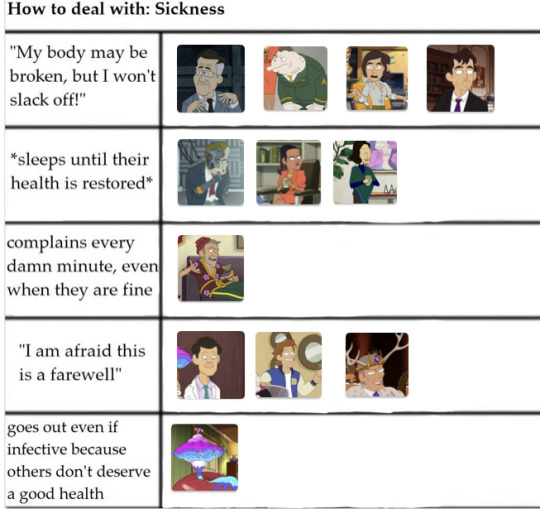






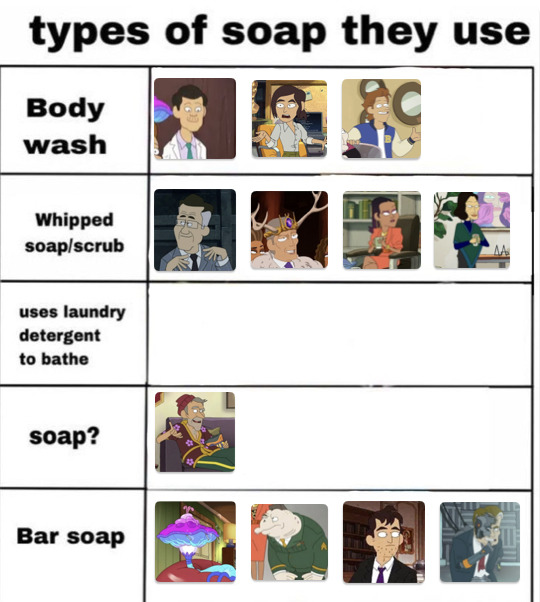



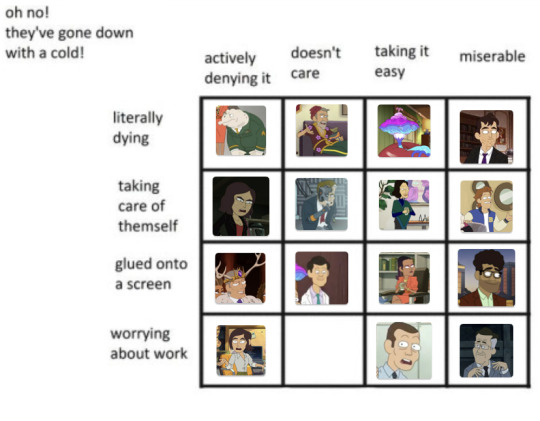



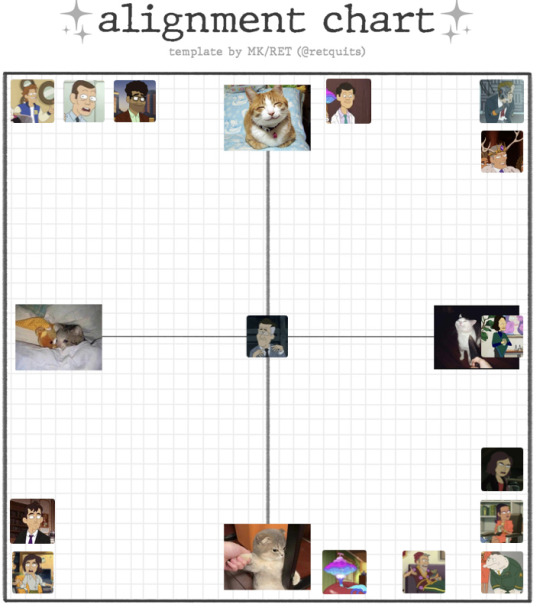






i forgot Robo Reagan Brian and Intern 4 in some of them oops sorry guys 😔. But yeah I cant stop making these oh god expect more
#inside job#reagan ridley#brett hand#andre lee#dr andre lee#gigi thompson#myc cellium#glenn dolphman#jr scheimpough#dietrich kluge#rand ridley#tamiko ridley#robotus alpha beta#alpha beta#brian jacobsen#intern 4#robo reagan
141 notes
·
View notes
Text




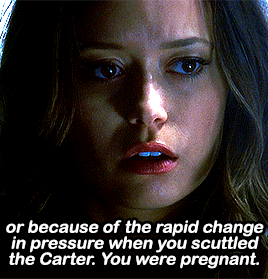



2.19 // 2.20 Bonus:

#tsccedit#tscc#terminator: the sarah connor chronicles#summer glau#cameron phillips#stephanie jacobsen#stephany jacobsen#jesse flores#brian austin green#derek reese#tvedit#tvgifs#derek x jesse#cameron x jesse#cameron x derek#mygraphics#gif#miscarriage cw
34 notes
·
View notes
Text

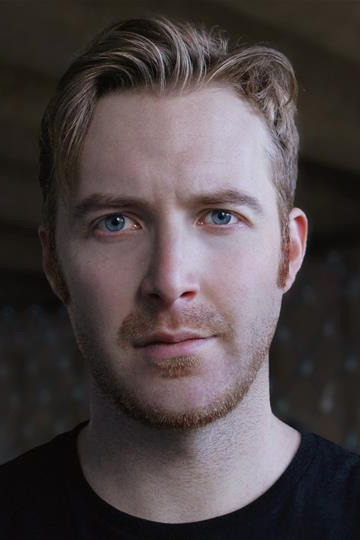
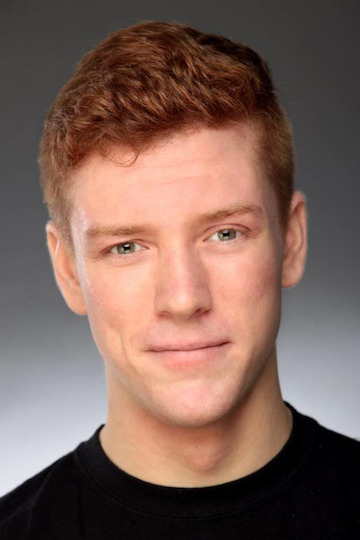
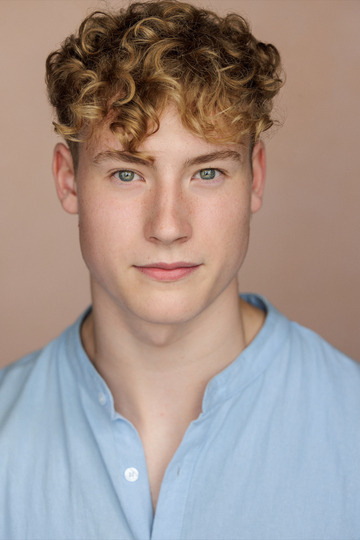

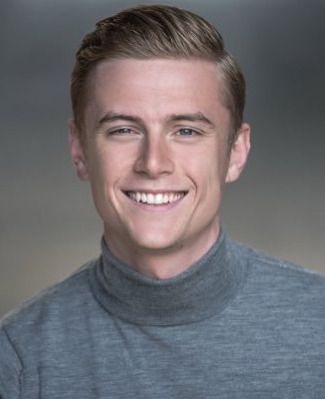
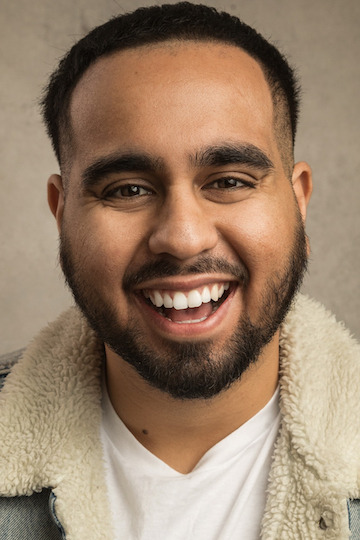
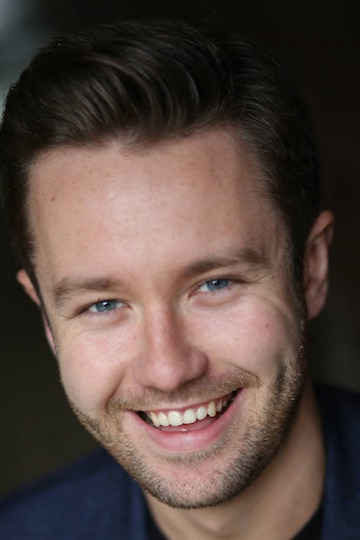
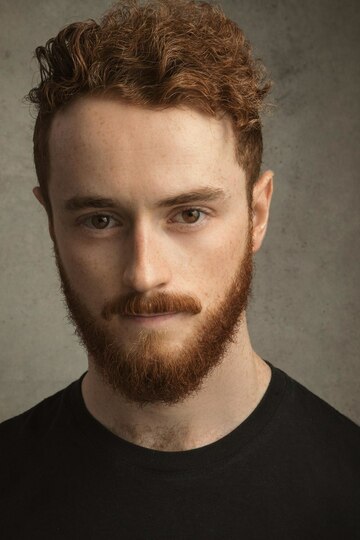
Les Amis in the 2024–2025 West End cast of Les Miserables: Robson Broad (Enjolras), Christopher Jacobsen (Combeferre), and Matthew McConnell (Courfeyrac); Ben Oatley (Joly), Daniel J Brian (Prouvaire), and Jonathan Stevens (Feuilly); Irfan Damani (Lesgles), Adam Colbeck-Dunn (Grantaire), and Matt Hayden (Bahorel/Montparnasse).
#les miserables#les amis#I am frankly horrified by the valjean casting but hey ho#there's always the amis#okay there's sometimes the amis
40 notes
·
View notes
Text
Bibliography:
Alchemy and the Occult:
Western:
Alchemy Unveiled, Johannes Helmond (Translated into English and Edited by
Gerard Hanswille and Deborah Brumlich); (1963)
Practical Alchemy, A Guide To The Great Work; Brian Cotnoir (2006)
The Black Arts (50th Anniversary Edition); Richard Cavendish (1968)
Alchemy & Mysticism: The Hermetic Cabinet; Alexander Roob (2009)
The Forge and the Crucible: The Origins and Structures of Alchemy (2nd Edition); Mircea Eliade (1962, 1978)
History of Alchemy; M. M. Pattison (1902)
Alchemy (Revised Edition); E. J. Holmyard (1990)
Dictionary of Symbolism, Cultural Icons and the Meanings Behind Them; Hans Biedermann, Translated by James Hulbert (1994)
The Encyclopedia of Witches, Witchcraft, and Wicca; Rosemary Ellen Guiley (1989)
The Encyclopedia of Ghosts and Spirits; Rosemary Ellen Guiley (1992)
Levantine:
The Jewish Alchemists: A History and Source Book; Raphael Patai (1994)
Ancient Magic and Divination, A Microhistorical Study of the Neo-Assyrian Healer Kiṣir-Aššur; Troels Pank Arbøll (2017)
Fuck Your "Magic" Antisemitism: A Lesser Key To The Appropriation Of Jewish Magic & Mysticism; Ezra Rose (2022)
“His wind is released” - The Emergence of the Ghost Ritual of passage in Mesopotamia; Dina Katz, Leiden (2014)
Cursed Are You! The Phenomenology of Cursing in Cuneiform and Hebrew Texts; Anne Marie Kitz (2014)
Egyptian Magic; E.A. Wallis Budge (1901)
Mesopotamian Planetary Astronomy-Astrology (Cuneiform Monographs); David Brown (2000)
Astrology in Ancient Mesopotamia: The Science of Omens and the Knowledge of the Heavens; Michael Baigent (July 20, 2015)
Ancient Jewish Magic: A History; Gideon Bohak (2008)
PERFORMING DEATH: SOCIAL ANALYSES OF FUNERARY TRADITIONS IN THE ANCIENT NEAR EAST AND MEDITERRANEAN; Nicola Laneri, Ellen F. Morris, Glenn M. Schwartz, Robert Chapman, Massimo Cultraro, Meredith S. Chesson, Alessandro Naso, Adam T. Smith, Dina Katz, Seth Richardson, Susan Pollock, Ian Rutherford, John Pollini, John Robb, and James A. Brown (2007)
Mesopotamian Conceptions of Dreams and Dream Rituals; Sally A. L. Butler (1998)
Forerunners to Udug-Hul: Sumerian exorcistic incantations; Markham J. Geller (1985)
Šurpu. A Collection of Sumerian and Akkadian Incantations; Erica Reiner (1958)
Mesopotamian Protective Spirits: The Ritual Texts; F. A. M. Wiggermann (1992)
The Alchemist's Handbook- Manual for Practical Laboratory Alchemy; Frater Albertus (1960)
Licit Magic: The Life and Letters of al-Ṣāḥib b. ʿAbbād (d. 385/995); Maurice A. Pomerantz (09 Nov 2017)
Further Studies on Mesopotamian Witchcraft Beliefs and Literature; Tzvi Abusch (2002)
The Heavenly Writing: Divination, Horoscopy, and Astronomy in Mesopotamian Culture; Francesca Rochberg (2004)
Greco-Roman:
Magic, Witchcraft, and Ghosts in Greek and Roman Worlds: A Sourcebook; Daniel Ogden (2002)
Far East Asia:
I Ching; Fu Xi (~1000 BCE)
Myths, Legends, Religious Texts And Folktales
Levantine:
The Treasures of Darkness: A History of Mesopotamian Religion; Thorkild Jacobsen (1976)
Persian Myths; Jake Jackson (2022)
Myths of Babylon; Jake Jackson (2018)
The Epic Of Gilgamesh (2nd Edition); Anonymous, Andrew George (????, 2000)
The First Ghost Stories; Dr. Irving Finkel (2021)
On Jewish Folklore; Raphael Patai (1983)
Sumerian Mythology, a Deep Guide Into Sumerian History and Mesopotamian Empire and Myths; Joshua Brown (2021)
Sumerian Mythology, a Study of Spiritual and Literary Achievement in the Third Millennium B.C. (Revised Edition); Samuel Noah Kramer (1961)
Sumerian Liturgies; Anonymous, Stephen Langdon (1919)
Inanna, Lady of Largest Heart, Poems of the Sumerian High Priestess Enheduanna; Enheduanna, Betty De Shong Meador (1989)
Ninurta's Journey to Eridu; Daniel Reisman (1971)
A Sumerian Proverb Tablet in Geneva With Some Thoughts on Sumerian Proverb (2006)
Enki's Journey to Nippur: The Journeys of the Gods; Al-Fouadi, Abdul-Hadi A. (1969)
The Arthur of the Welsh: The Arthurian Legend in Medieval Welsh Literature by Rachel Bromwich (1991)
Encyclopedia of American Folklore; Linda S. Watts (2006)
Jewish Magic and Superstition: A Study in Folk Religion; Joshua Trachtenberg (1939)
Amulets and Talismans; E.A. Wallis Budge (The copy I have was published in 1992 but he died in 1934. Not sure when the original work was created.)
Ashkenazi Herbalism: Rediscovering the Herbal Traditions of Eastern European Jews; Deatra Cohen, Adam Siegel (2021)
Encyclopedia of Catholicism; Frank K. Flinn (2007)
As Through a Veil: Mystical Poetry in Islam; Annemarie Schimmel (1982)
You Will Have Other Goddesses in Addition to Me: Polytheism Among Ancient Israelite Women; Liora Finke (2022)
Gods That Travel: On The Ritual Aspects of Divine Journeys And Processions; Klaus Wagensonner (2014)
NINURTA AND ENKI; A new divine journey of the warrior god to Eridu; Klaus Wagensonner (2013)
Jewish Music in Its Historical Development; Abraham Zevi Idelsohn (1929)
The God Enki in Sumerian Royal Ideology and Mythology; Peeter Espak (2010)
The Encyclopedia of Jewish Myth, Magic & Mysticism: Second Edition; Geoffrey W. Dennis (2007)
Book of Jewish Knowledge: An Encyclopedia of Judaism and the Jewish People, Covering All Elements of Jewish Life from Biblical Times to the Present (03 May 1948); Nathan Ausubel
Encyclopedia of Judaism (Encyclopedia of World Religions); Sara E. Karesh & Mitchell M. Hurvitz (2006)
Aboriginal Australia:
Gadi Mirrabooka: Australian Aboriginal Tales from the Dreaming; Pauline E. McLeod, Francis Firebrace Jones, June E. Barker, Helen F. McKay (2001)
The Two Rainbow Serpents Travelling: Mura Track Narratives from the 'Corner Country'; Jeremy Beckett, Luise Hercus (2009)
Mixed or Other:
Egyptian Myths & Tales; Japanese Myths & Tales, Aztec Myths & Tales, Scottish Folk & Fairytales, Viking Folk & Fairytales, Chinese Myths & Tales, Greek Myths & Tales, African Myths & Tales, Native American Myths & Tales, Persian Myths & Tales, Celtic Myths & Tales, Irish Fairy Tales; Anonymous, Flame Tree Publishing
Tales of King Arthur & The Knights Of The Round Table (Le Morte D’Arthur); Thomas Malory
The Encyclopedia of Celtic Mythology and Folklore; Patricia Monaghan (2004)
Academic (Science including Psychology)
Stellar Alchemy: The Celestial Origin of Atoms, Michel Cassé, Stephen Lyle (2003)
Aboriginal Suicide Is Different: A Portrait of Life And Self Destruction; Colin Tatz (2005)
Fruit Domestication in the Near East; Shahal Abbo, Avi Gopher & Simcha Lev-Yadun (2015)
Astronomical Cuneiform Texts: Babylonian Ephemerides of the Seleucid Period for the Motion of the Sun, the Moon, and the Planets (Sources in the History of Mathematics and Physical Sciences, 5); Otto E. Neugebauer (1945)
Studies in the History of Science; E. A. Speiser; Otto E. Neugebauer; Hermann Ranke; Henry E. Sigerist; Richard H. Shryock; Evarts A. Graham; Edgar A. Singer; Hermann Weyl (Compiled In 2017)
Studies in Civilization; Alan J. B. Wace; Otto E. Neugebauer; William S. Ferguson (Compiled In 2016)
Astronomy and History: Selected Essays; Otto E. Neugebauer (Compiled In 1983)
The Encyclopedia of the Brain and Brain Disorders; Carol Turkington (2002)
The Encyclopedia of Poisons and Antidotes; Deborah R. Mitchell & Carol Turkington (2010)
The Encyclopedia of Suicide; Glen Evans, Norman L. Farberow, Ph.D. & Kennedy Associates (1988)
Academic (History)
Western:
Encyclopedia of Native American Tribes; Carl Waldman (2006)
Levantine:
Sounds from the Divine: Religious Musical Instruments in the Ancient Near East; Dahlia Shehata (2014)
Gender and Aging in Mesopotamia: The Gilgamesh Epic and Other Ancient Literature; Rivkah Harris (05/12/2003)
House Most High: The Temples of Ancient Mesopotamia; A. R. George (1993)
The Cultural Atlas of Mesopotamia and the Ancient Near East; Michael Roaf (1990)
The Meaning of Color in Ancient Mesopotamia; Shiyanthi Thavapalan (2020)
The Loss of Male Sexual Desire in Ancient Mesopotamia; Gioele Zisa (2021)
Materials and Manufacture in Ancient Mesopotamia: The evidence of Archaeology and Art. Metals and metalwork, glazed materials and glass; P. R. S. Moorey (3/1/1985)
Collections; Bendt Alster, Takayoshi Oshima (2006)
Political Agency of Royal Women; Paula Sabloff (2019)
Studies in Sumerian Civilization: Selected Writings Of Miguel Civil; Miguel Civil, edited by Lluís Felu (2017)
A study on the natural heritage and its importance in the Sumerian civilization in southern Iraq; Al-Hussein Nabeel Al-Karkhi, Isam Hussain T. Al-Karkhi (2021)
A Sumerian Riddle Collection; Bendt Alster (1976)
SUMERIAN “CHILD”; Vitali Bartash (2018)
The civilizing of Ea-Enkidu an unusual tablet of the Babylonian Gilgamesh Epic; Andrew R George (2007)
Celibacy in the Ancient World: Its Ideal and Practice in Pre-Hellenistic Israel, Mesopotamia, and Greece; Dale Launderville OSB (07/01/2010)
House and Household Economies in 3rd Millennium B.C.E. Syro-Mesopotamia; Federico Buccellati ,Tobias Helms & Alexander Tamm (2014)
The Harps That Once… Sumerian Poetry In Translation; Thorkild Jacobsen (1987)
The Divine Origin Of The Craft Of The Herbalist; Sir E. A. Wallis Budge (1928)
Disease in Babylonia; Edited by Irving Finkel and Markham (Mark) Geller (2007)
Royal Statuary of Early Dynastic Mesopotamia; Gianni Marchesi and Nicolo Marchetti (2011)
Myths of Enki, The Crafty God; Samuel Noah Kramer, John Maier (1989)
Household and State in Upper Mesopotamia; Patricia Wattenmaker (July 17, 1998)
Assyrian Rulers of the Early First Millennium; Albert Kirk Grayson (1987)
Gudea's Temple Building: The Representation of an Early Mesopotamian Ruler in Text and Image (Cuneiform Monographs); Claudia E. Suter (January 1, 2000)
Reading Sumerian Poetry (Athlone Publications in Egyptology & Ancient Near Eastern Studies); Jeremy Black (2001)
Handbook to Life in Ancient Mesopotamia; Stephen Bertman (2002)
Weavers, Scribes, and Kings: A New History of the Ancient Near East; Amanda H. Podany (2022)
History Begins at Sumer: Thirty-Nine Firsts in Recorded History; Samuel Noah Kramer (1981)
A History of the Animal World in the Ancient Near East; Edited by Billie Jean Collins (2002)
The Sumerians: Their History, Culture, and Character; Samuel Noah Kramer (1963)
The Ancient Near East in Transregional Perspective: Material Culture and Exchange Between Mesopotamia, the Levant and Lower Egypt from 5800 to 5200 ... Sudan and the Levant; Katharina Streit (11/10/2020)
Colonialism and Christianity in Mandate Palestine; Laura Robson (September 1, 2011)
Poetic Astronomy in the Ancient Near East The Reflexes of Celestial Science in Ancient Mesopotamian, Ugaritic, and Israelite Narrative; Jeffrey L. Cooley (2013)
Hasidism, Haskalah, Zionism: Chapters in Literary Politics (Jewish Culture and Contexts); Hannan Hever (October 17, 2023)
Mourning in the Ancient Near East and the Hebrew Bible; Xuan Huong Thi Pham (1999)
Medieval Hebrew Poetry in Muslim Egypt; Joachim J.M.S. Yeshaya (2011)
The Land that I Will Show You: Essays on the History and Archaeology of the Ancient Near East in Honor of J. Maxwell Miller; J. Andrew Dearman & M. Patrick Graham (January 9, 2002)
Jerusalem in Ancient History and Tradition; Thomas L. Thompson (2003)
Prisons in Ancient Mesopotamia, Confinement and Control until the First Fall of Babylon; Dr. J. Nicholas Reid (2022)
Prophets Male and Female: Gender and Prophecy in the Hebrew Bible, the Eastern Mediterranean, and the Ancient Near East; Jonathan Stökl & Corrine L. Carvalho (2013)
The Calm before the Storm- Selected writings of Itamar Singer on the late Bronze Age in Anatolia and the Levant; Itamar Singer (2012)
"Holiness" and "purity" in Mesopotamia; E. Jan Wilson (1994)
The Material Culture of the Northern Sea Peoples in Israel; Ephraim Stern (2013)
Family and Household Religion in Ancient Israel and the Levant; Rainer Albertz and Rüdiger Schmitt (2012)
Scribal Education in Ancient Israel: The Old Hebrew Epigraphic Evidence; Christopher A. Rollston (11/2006)
Neanderthals in the Levant- Behavioural Organization and the Beginnings of Human Modernity; Donald O. Henry (10/2003)
Suddenly, the Sight of War- Violence and Nationalism in Hebrew Poetry in the 1940s; Hannan Hever (2016)
Gender and Law in the Hebrew Bible and the Ancient Near East; Victor H. Matthews, Victor H. Matthews, Bernard M. Levinson, Tikva Frymer-Kensky (1998)
The concept of fate in ancient Mesopotamia of the 1st millennium: Toward an understanding of 'simtu'; Jack N. Lawson (1992)
The Myth of the Jewish Race; Raphael Patai, Jennifer Patai Wing (01/01/1975)
The Dream of the Poem: Hebrew Poetry from Muslim and Christian Spain, 950-1492; Peter Cole (01/22/2007)
Encyclopedia of Jewish Folklore and Traditions; Raphael Patai (2013)
Hebrew Myths; Robert Graves and Raphael Patai (2005)
Vast as the Sea - Hebrew Poetry and the Human Condition; Samuel Hildebrandt (12/05/2023)
Sex & Eroticism in Mesopotamian Literature; Gwendolyn Leick (1994)
Far East Asian:
Encyclopedia of Ancient Asian Civilizations; Charles Higham (2004)
Aboriginal Australia:
Aboriginal Peoples: Fact and Fiction; Pierre Lepage, Maryse Alcindor, Jan Jordon (2009)
Visions from the Past: The Archaeology of Australian Aboriginal Art; M.J. Morwood, Douglas Hobbs, D.R. Hobbs (2002)
Mixed or Other:
Early Civilizations of the Old World: The Formative Histories of Egypt, The Levant, Mesopotamia, India and China; Charles Keith Maisels (May 20, 2001)
20,000 Years of Fashion: The History of Costume and Personal Adornment; Francois Boucher (1967)
Black Morocco: A History of Slavery, Race, and Islam; Chouki El Hamel (2012)
The Birth of Science: Ancient Times to 1699; Ray Spangenburg & Diane Kit Moser (2004)
The Architecture of Castles: A Visual Guide; Reginald Allen Brown (1984)
Encyclopedia of War Crimes and Genocide; Leslie Alan Horvitz and Christopher Catherwood (2006)
Linguistic
Cuneiform; Irving Finkel, Jonathan Taylor (2015)
An Introduction to the Grammar of Sumerian; Gábor Zólyomi (2017)
Learn to Read Ancient Sumerian: An Introduction for Complete Beginners; Joshua Aaron Bowen, Megan Lewis (2020) Learn to Read Ancient Sumerian: An Introduction for Complete Beginners, Volume 2; Joshua Aaron Bowen, Megan Lewis (2023)
The Sur₉-Priest, the Instrument giš Al-gar-sur₉, and the Forms and Uses of a Rare Sign; Niek C. (1997/1998)
Sumerian Grammar (Handbook of Oriental Studies. Section One, the Near [And] Mi) (English and Sumerian Edition); Dietz Otto Edzard (2003)
A Late Old Babylonian Proto-Kagal / Nigga Text and the Nature of the Acrographic Lexical Series; Niek VELDHUIS -Groningen (1998)
Learning To Pray In A Dead Language, Education And Invocation in Ancient Sumerian; Joshua Bowen (2020)
Aboriginal Sign Languages of The Americas and Australia: Volume 1; North America Classic Comparative Perspectives; Garrick Mallery (auth.), D. Jean Umiker-Sebeok, Thomas A. Sebeok (eds.) (1978)
The Literature of Ancient Sumer; Jeremy Black, Graham Cunningham, Eleanor Robson, Gabor Zolyomi (2004)
Sumerian Lexicon: A Dictionary Guide to the Ancient Sumerian Language; John Alan Halloran (2006)
A Sumerian Chrestomathy; Konrad Volk (1911)
Online Articles, Dictionaries And Other Resources:
https://nationalclothing.org/middle-east/305-traditional-clothing-of-mesopotamia-what-did-it-look-like.html
https://www.getty.edu/news/meet-the-mesopotamian-demons/
https://factsanddetails.com/world/cat56/sub363/
https://ehistory.osu.edu/articles/marriage-ancient-mesopotamia-and-babylonia
https://etcsl.orinst.ox.ac.uk/section5/tr561.htm
http://psd.museum.upenn.edu/nepsd-frame.html
https://www.britannica.com/place/Africa/Trade
https://www.worldhistory.org/article/2185/festivals-in-ancient-mesopotamia/
https://www.nytimes.com/2017/07/25/well/family/cutting-out-the-bris.html
http://oracc.museum.upenn.edu/amgg/listofdeities/nannasuen/
https://phys.org/news/2023-08-idea-imprisonment-prisoners-earliest-texts.html
http://www.mathematicsmagazine.com/Articles/TheSumerianMathematicalSystem.php
https://docs.google.com/document/d/1ooHEYR30oNCdI4Xxop9qBjKQGnqTPwLHQzT8cvv5oxA/edit Sumerian Grammar Made Easy! (2022 Edition)
Historians, linguists, etc:
https://sumerianlanguage.tumblr.com/ aka http://www.jamesbarrettmorison.com/sumerian.html
https://sumerianshakespeare.com/
https://www.youtube.com/c/DigitalHammurabi aka https://www.digitalhammurabi.com/
https://twitter.com/digi_hammurabi and https://twitter.com/DJHammurabi1
Podcasts and online-exclusive documentaries, video essays, etc
8. The Sumerians - Fall of the First Cities (2020)
13. The Assyrians - Empire of Iron (2021)
The Complete and Concise History of the Sumerians and Early Bronze Age Mesopotamia (7000-2000 BC) (2021)
The Royal Death Pits of Ur (2022)
Gilgamesh and the Flood (2021)
The Birth of Civilisation - Rise of Uruk (6500 BC to 3200 BC) (2021)
The Earliest Creation Myths - Mythillogical (2022)
Enuma Elish | The Babylonian Epic of Creation | Complete Audiobook | With Commentary (2020)
Eridu Genesis | The Sumerian Epic of Creation (2021)
Irving Finkel | The Ark Before Noah: A Great Adventure (2016)
Cracking Ancient Codes: Cuneiform Writing - with Irving Finkel (2019)
Ancient Demons with Irving Finkel I Curator's Corner S3 Ep7 #CuratorsCorner (2018)
How to perform necromancy with Irving Finkel (2017)
Mesopotamian ghostbusting with Irving Finkel I Curator's Corner + #CuratorsCorner (2018)
Video Games
Sonic The Hedgehog Encyclospeedia; Ian Flynn (2021)
Direct Inspiration
The Golden Compass (1995), The Subtle Knife (1997); The Amber Spyglass (2000); Philip Pullman
The Last Unicorn; Peter S. Beagle (1968)
The 13 and ½ Lives Of Captain Bluebear: A Novel; Walter Moers (1999)
Allerleirauh; Jacob and Wilhelm Grimm (1812)
The Epic of Beowulf; Anonymous (c. 700–1000 AD)
The Writing In The Stone; Irving Finkel (October 10, 2017)
6 notes
·
View notes
Text
Tech Stocks Plunge as DeepSeek Disrupts AI Landscape

Market Reaction: Nvidia, Broadcom, Microsoft, and Google Take a Hit On January 27, the Nasdaq Composite, heavily weighted with tech stocks, tumbled 3.1%, largely due to the steep decline of Nvidia, which plummeted 17%—its worst single-day drop on record. Broadcom followed suit, falling 17.4%, while ChatGPT backer Microsoft dipped 2.1%, and Google parent Alphabet lost 4.2%, according to Reuters.
The Philadelphia Semiconductor Index suffered a significant blow, plunging 9.2%—its largest percentage decline since March 2020. Marvell Technology experienced the steepest drop on Nasdaq, sinking 19.1%.
The selloff extended beyond the US, rippling through Asian and European markets. Japan's SoftBank Group closed down 8.3%, while Europe’s largest semiconductor firm, ASML, fell 7%.
Among other stocks hit hard, data center infrastructure provider Vertiv Holdings plunged 29.9%, while energy companies Vistra, Constellation Energy, and NRG Energy saw losses of 28.3%, 20.8%, and 13.2%, respectively. These declines were driven by investor concerns that AI-driven power demand might not be as substantial as previously expected.
Does DeepSeek Challenge the 'Magnificent Seven' Dominance? DeepSeek’s disruptive entrance has sparked debate over the future of the AI industry, particularly regarding cost efficiency and computing power. Despite the dramatic market reaction, analysts believe the ‘Magnificent Seven’—Alphabet, Amazon, Apple, Meta, Microsoft, Nvidia, and Tesla—will maintain their dominant position.
Jefferies analysts noted that DeepSeek’s open-source language model (LLM) rivals GPT-4o’s performance while using significantly fewer resources. Their report, titled ‘The Fear Created by China's DeepSeek’, highlighted that the model was trained at a cost of just $5.6 million—10% less than Meta’s Llama. DeepSeek claims its V3 model surpasses Llama 3.1 and matches GPT-4o in capability.
“DeepSeek’s open-source model, available on Hugging Face, could enable other AI developers to create applications at a fraction of the cost,” the report stated. However, the company remains focused on research rather than commercialization.
Brian Jacobsen, chief economist at Annex Wealth Management, told Reuters that if DeepSeek’s claims hold true, it could fundamentally alter the AI market. “This could mean lower demand for advanced chips, less need for extensive power infrastructure, and reduced large-scale data center investments,” he said.
Despite concerns, a Bloomberg Markets Live Pulse survey of 260 investors found that 88% believe DeepSeek’s emergence will have minimal impact on the Magnificent Seven’s stock performance in the coming weeks.
“Dethroning the Magnificent Seven won’t be easy,” said Steve Sosnick, chief strategist at Interactive Brokers LLC. “These companies have built strong competitive advantages, though the selloff served as a reminder that even market leaders can be disrupted.”
Investor Shift: Flight to Safe-Haven Assets As tech stocks tumbled, investors moved funds into safer assets. US Treasury yields fell, with the benchmark 10-year yield declining to 4.53%. Meanwhile, safe-haven currencies like the Japanese Yen and Swiss Franc gained against the US dollar.
According to Bloomberg, investors rotated into value stocks, including financial, healthcare, and industrial sectors. The Vanguard S&P 500 Value Index Fund ETF—home to companies like Johnson & Johnson, Procter & Gamble, and Coca-Cola—saw a significant boost.
“The volatility in tech stocks will prompt banks to reevaluate their risk exposure, likely leading to more cautious positioning,” a trading executive told Reuters.
OpenAI’s Sam Altman Responds to DeepSeek’s Rise OpenAI CEO Sam Altman acknowledged DeepSeek’s rapid ascent, describing it as “invigorating” competition. In a post on X, he praised DeepSeek’s cost-effective AI model but reaffirmed OpenAI’s commitment to cutting-edge research.
“DeepSeek’s R1 is impressive, particularly given its cost-efficiency. We will obviously deliver much better models, and competition is exciting!” Altman wrote. He hinted at upcoming OpenAI releases, stating, “We are focused on our research roadmap and believe
3 notes
·
View notes
Text
Ask A Genius 1213: The Murder of Brian Thompson
Scott Douglas Jacobsen: A few days ago, Ben Thompson, a 50-year-old CEO of UnitedHealth Group (the parent company of UnitedHealthcare), was fatally shot in New York City. Reports suggest the shooter took a bus to the city and waited for 10 days, apparently targeting Thompson, who was there to speak at an investors’ conference. Rick Rosner: UnitedHealth Group has been criticized for its…
0 notes
Text
Sundance Preview
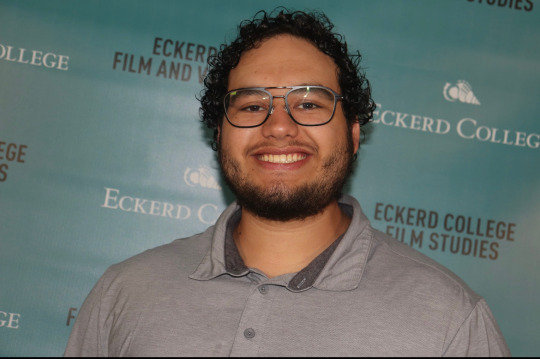
Hello everyone! My name is Jackson Willhoit. I am a current junior at Eckerd College who is majoring in film and minoring in music.
I am extremely excited about the upcoming Sundance Film Festival! Although I want to show love to all of the films being screened, I have found a particular interest in a few films. Some of these films include:
(Features)
As We Speak by J.M. Harper. This film follows a rapper who discusses the recent weaponization of rap lyrics against rap artists in court. As an aspiring rap producer, I work with different artists and produce multiple beats to express my art. However, in recent years, high-profile artists have been incarcerated due to the content of their rap lyrics being used as evidence against them. This has sparked a significant argument within the rap community debating whether or not their own works of art should be used against them in the court of law.
Freaky Tales by Ryan Fleck. I am a huge fan of Pedro Pascal and I love the idea of several stories being interconnected in one film.
FRIDA by Carla Gutiérrez follows the life of Frida Kahlo through Frida’s own words and her personal writings. I was able to learn a lot about Frida through Visual Art and Spanish classes I have taken over the past few years, however, I am intrigued to learn more about her life through her own perspective.
A New Kind of Wilderness by Silje Evensmo Jacobsen follows a family attempting to live in the wilderness when they eventually have to adapt to modern society because of a tragic incident. I am fascinated with nature and I am extremely curious about what the tragic event was in the film that forced such a significant change on this family.
Will & Harper by Josh Greenbaum is about a close friend of Will Ferrell who came out as a transgender woman and the two embark on a road trip of friendship and transition. I have watched Will Ferrell films almost my entire life, which sparks my excitement for this film, and I am curious to learn more about his friendship with Harper.
(Animated Short FIlm Program)
Bug Diner by Phoebe Jane Hart seems to be humorous and the animation looks to be extremely well done through photos on Sundance’s website.
Drago by Daniel Zvereff looks to be a very strong story-oriented animation film and I am eager to learn more about the characters.
Larry by Takeshi Murata focuses on a dog who plays basketball like Shaquille O’Neal while losing its shape. I have a sweet spot for anything basketball related, hence the excitement towards this animation.
27 by Flóra Anna Buda looks like a beautiful animation of a woman who lives in her dreams to escape reality. The story seems really interesting and the photos of the animation look gorgeous.
Baigal Nuur - Lake Baikal by Alisi Telengut follows the creation of Lake Baikal in Siberia through the endangered Buryat language. I am interested in this film because of the vibrant and eye-catching colors of the animation.
(New Frontier/Episodic)
ENO by Gary Hustwit is an experience that follows the life of legendary music producer and solo music artist, Brian Eno, who takes you through his thought process towards his music. I love music and I am curious about how his thought process towards making music can serve as a learning opportunity for someone like me who is currently studying music.
Better Angels: The Gospel According To Tammy Faye by Dana Adam Shapiro looks at the story behind the uprising and downfall of Tammy Faye, also known as, “The First Lady of the Electric Church.” I have always been intrigued with scandal documentaries for some reason, so this film will fuel that interest for me.
If you have made it this far, thank you for reading and stay tuned for more blog posts throughout the month!
If you would like to browse the films being showcased in this year's Sundance Film Festival, click here
- Jackson Willhoit
0 notes
Text
2023 - könyvek
* Tim Chester: Örömteli kapcsolat Istennel
* Clifford és Joyce Penner: A szexualitás ajándéka (2013)
* Sue Johnson & Kenny Sanderfer - Kapcsolatra teremtve | Ölelj át! Együtt, Istennel (kötődés)
* Wayne Jacobsen – Dave Coleman: Szóval nem akarsz többé gyülekezetbe járni Egy váratlan utazás
* A Story that Should Never Have Happened (Hence Deserves to be Told) 2015 Gábor Grèsz
* Paul Washer: The Essential Means of Grace
* Billy Graham: Közelgő lódobogás - Az Apokalipszis négy lovasa
* Cseri Kálmán: Sorsfordító imádságok
* Coulson Shepherd: Zsidó ünnepek (Prófétai és keresztyén jelentőségük)
* Greg Gilbert: Who Is Jesus?
* Ingmar Bergman: Jelenetek egy házasságból
* Kevin Leman: Szexre hangolva Kendőzetlenül a házassági intimitásról (Harmat)
* Az 1689-es Baptista Hitvallás
* Jordan B. Peterson: 12 szabály az élethez | Így kerüld el a káoszt!
* Szabados Ádám: Az apostolok hagyománya (2019 - KRE doki)
* Jonathan Edwards: Sinners in the hands of an angry God
* Russel Moore: Adoption: What Joseph of Nazareth can teach us about this countercultural choice
* Jeramie Rinne: A gyülekezet elöljárói - Isten népének pásztorai
* Paul Washer: The Gospel of Jesus Christ (füzet) ©2016
* Sam Rowland: A hihetetlen határán (YFC)
* David Gibson: Living life Backward - Ecclesiastes
* Kepes András: A boldog hülye és az okos depressziós
* John Calvin: A Little Book On The Christian Life (Ligonier)
* R. C. Sproul: Mi az evangélium?
* Paul Washer: The Preeminent Christ
* C H Spurgeon: Reggel és Este🙏🏻
2023 - filmek
* Chosen 3. évad (8 epizód)
* Madarak a dobozban (Birdbox)
* Együtt kezdtük
* Szia Életem
* János vitéz (Nemzeti Színház)
* Nyolc hegy 🏔
* Raised on Porn | Documentary
* Ifjúság (2015) Youth
* OTTO (Tom Hanks)
* Titanic 3D
* Nyugaton a helyzet változatlan
* A bolygónk jövőjének tudománya
* A lehetetlen (2012)
* Brian élete
* Anabaptisták - 500 éve a Kárpát-medencében
* Gyagyás gyilkosság 1,2
* A LEVÉL (Ferenc pápa)Üzenet🌏
* Egy asszony illata
* A pápa ördögűzője (exorcist🔞)
* A nemzet aranyai💦
* Az elefánt suttogó
* Két távoli idegen
* A szürke ötven árnyalata
* Átjáróház
* The Missionary Position (2014)
* Apcsel sorozat🎞 (12 rész)
* Gucci ház
* Whale
* Tizenkét dühös ember
* Sound of Freedom *
* Pursuit of happiness
* Holt költők társasága
* SKYFALL (James Bond)…
* Jesus Revolution - Netflix
* Boldogság kezdőknek
* The Deepest Breath
* Bolygónk Csodái 2. (Attenborough)
* Non-stop (Liam)
* JOBS
* Steve Jobs (2015)
* A szabadság ötven árnyalata
* Blokád
* A védelmező 3.
* Nyugati nyaralás
* Egy mindenkiért (Sz.Áron) 🥇
* FAUDA (arab-izraeli sorozat)
* What is a woman?
* Van valami furcsa és megmagyarázhatatlan
* Hab (magyar vígjáték)
* Nagykarácsony
* HADIK
* 10 év úton (B@gossy)
* The Holiday
* Semmelweis
* The Crown (utolsó rész)
* Maestro
* Tűzszekerek
* Nyúl Péter 1, 2.
0 notes
Text
Investors are keeping a close eye on the situation in Israel following a surprise attack launched early Saturday by Hamas – the militant group that controls the Gaza Strip, a heavily populated coastal Palestinian territory – because of the possible geopolitical risks it could pose to global financial markets. The Israel-Hamas conflict is a protracted and deeply rooted dispute between Israel and the Palestinian group Hamas, primarily concentrated in the Gaza Strip. The conflict revolves around historical, territorial, and ideological differences, resulting in recurrent cycles of violence, ceasefires, and international mediation efforts. Concerns are emerging among investors regarding the ongoing instability in the region, which may result in a transition toward safer investment options, thereby increasing the demand for assets that provide a safe haven. Geopolitical events in the Middle East historically have had a significant impact on financial markets, and this latest turmoil is no exception. As tensions escalate, market participants are becoming increasingly cautious, and this caution is reflected in their behavior as they seek refuge in safe-haven assets. Saturday saw Hamas gunmen penetrate Israel for the first time, sparking Western outrage, with the United States leading the push in supporting Israel. Safe-Haven Appeal And Financial Accessibility This incident may enhance geopolitical anxiety and investment in safe-haven assets like gold and the US dollar, driving up Treasuries demand. Analysts say these securities have sold off recently as investors seek sanctuary in less risky assets amid global uncertainty. The US dollar typically strengthens during global unrest as it is seen as a safe haven currency. This is due to its stability, the confidence in the US economy and financial markets, and potential monetary policy actions by the Federal Reserve that can devalue other currencies relative to the dollar, making it more appealing to investors seeking security in times of global turmoil. Peter Cardillo, chief market economist at Spartan Capital Securities, said: “Anytime there is international turmoil, the US dollar strengthens.” Cardillo also pointed out that this exemplifies the significance of including gold inside one’s investment portfolio. According to the economist, it serves as an effective safeguard against global instability. Speculation that US interest rates would remain elevated for a prolonged period of time has prompted market movements in recent weeks. As the US currency has been on a winning streak, bond rates have risen sharply. Stock prices, on the other hand, dropped significantly throughout the third quarter but have leveled off in the last week. Hamas’ surprise attack in Israel sends shockwaves through global markets, underlining the urgent need for safe-haven assets. Cryptocurrencies emerge as a compelling choice, potentially surpassing traditional havens like gold and the US dollar. Cryptocurrency market cap currently at $1.06 trillion. Chart: TradingView.com In the face of soaring geopolitical risks, cryptocurrencies shine as the assets to acquire, offering a new frontier in financial safety and security. Brian Jacobsen, chief economist at Annex Wealth Management, shares his views on the situation in Israel: “Whether this is a massive market moment or not depends on how long it lasts and whether others are sucked into the conflict.” Image: Shutterstock How Cryptocurrencies Could Benefit Amidst Middle East Conflict The ongoing geopolitical conflict in the Middle East, particularly between Israel and Hamas, has inadvertently highlighted several potential positive impacts on cryptocurrencies. Firstly, heightened geopolitical tensions can serve as a catalyst for increased interest in digital assets as a safe-haven investment. Cryptocurrencies, like Bitcoin, have been increasingly regarded as “digital gold” due to their finite supply and decentralization, making them an attractive option for investors seeking refuge during uncertain times.
As traditional safe-haven assets like gold and the US dollar face challenges, cryptocurrencies could emerge as an alternative store of value. Secondly, the conflict emphasizes the utility of cryptocurrencies in facilitating cross-border transactions and providing financial accessibility to individuals affected by political turmoil. In regions with strict capital controls or unstable financial systems, cryptocurrencies can offer a means of preserving wealth and conducting international trade outside the traditional banking system. This conflict emphasizes the need of borderless and censorship-resistant financial instruments, bolstering cryptocurrencies’ role in financial inclusion and resilience in geopolitical tension zones. The Middle East conflict indirectly shows how cryptocurrency could boost global investment and financial empowerment in crisis-stricken places.
0 notes
Text
MIT's Laser-based system achieves noncontact medical ultrasound imaging
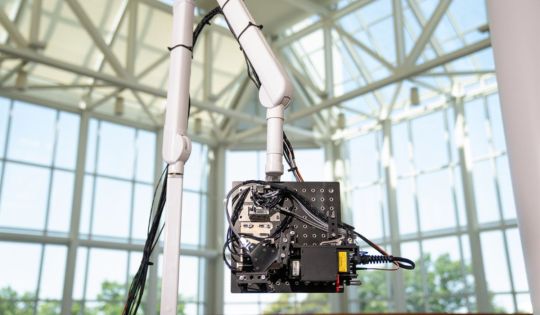
Laser-based system achieves noncontact medical ultrasound imaging. Noncontact Laser Ultrasound offers capabilities comparable to those of MRI and CT but at vastly lower cost, in an automated and portable platform. Researchers from MIT Lincoln Laboratory and their collaborators at the Massachusetts General Hospital (MGH) Center for Ultrasound Research and Translation (CURT) have developed a new medical imaging device: the Noncontact Laser Ultrasound (NCLUS). This laser-based ultrasound system provides images of interior body features such as organs, fat, muscle, tendons, and blood vessels. The system also measures bone strength and may have the potential to track disease stages over time. "Our patented skin-safe laser system concept seeks to transform medical ultrasound by overcoming the limitations associated with traditional contact probes," explains principal investigator Robert Haupt, a senior staff member in Lincoln Laboratory's Active Optical Systems Group. Haupt and senior staff member Charles Wynn are co-inventors of the technology, with assistant group leader Matthew Stowe providing technical leadership and oversight of the NCLUS program. Rajan Gurjar is the system integrator lead, with Jamie Shaw, Bert Green, Brian Boitnott (now at Stanford University), and Jake Jacobsen collaborating on optical and mechanical engineering and construction of the system.
Medical ultrasound in practice
If your doctor orders an ultrasound, you can expect a highly trained sonographer to press and manipulate an array of transducers, set in a handheld device, onto your body. As the sonographer pushes the transducer probe across your skin, high-frequency acoustic waves (ultrasound waves) penetrate and propagate through your body tissue, where they "echo" off different tissue structures and features. These echoes manifest from the acoustic impedance, or change in tissue strength (tissue softness or rigidity), from fat, muscle, organs, blood vessels, and bone deep inside the body. The probe receives the returning echoes, which are assembled into representational images of the body's internal features. Specialized processing schemes (synthetic aperture processing) are used to construct the shapes of the tissue features in 2D or 3D, and these constructions are then displayed on a computer monitor in real time. Using ultrasound, doctors can noninvasively "see" inside the body to image diverse tissues and their geometries. Ultrasound can also measure blood flow pulsing through arteries and veins, and can characterize the mechanical properties (elastography) of tissues and organs. Ultrasound is used routinely to assist doctors in evaluating and diagnosing a variety of health conditions, diseases, and injuries. For example, ultrasound can be used to image the anatomy a developing fetus, detect tumors, and measure the degree of narrowing or leakage in heart valves. Ranging from handheld devices on an iPhone to cart-based systems, ultrasound is highly portable, relatively inexpensive, and widely used in point-of-care and remote-field settings.

Lincoln Laboratory researchers (left to right) Rajan Gurjar, Jake Jacobsen (kneeling), Bert Green, Robert Haupt, Jamie Shaw, Brian Boitnott, and Matthew Stowe co-developed the Noncontact Laser Ultrasound. Not pictured: Charles Wynn. Credits: Photo: Glen Cooper /MIT
Limitations of ultrasound
Though state-of-the-art medical ultrasound systems can resolve tissue features within fractions of a millimeter, the technique has some limitations. Freehand manipulation of the probe by sonographers to obtain the best viewing window into the body interior leads to imaging errors. More specifically, as sonographers apply pressure to the probe by feel, they randomly compress the local tissue where the probe makes contact, causing unpredictable changes in the tissue properties that impact the travel paths of the ultrasound waves. This compression distorts tissue-feature images with some unpredictability, meaning feature shapes are not accurately plotted. In addition, tilting the probe, even slightly, changes the angle plane of the image view — skewing the image and creating uncertainty of where features are positioned in the body. The image distortion and positional reference uncertainty are significant enough that ultrasound cannot resolve with sufficient confidence, for example, whether a tumor is getting larger or smaller and precisely where the tumor is located in the host tissue. Furthermore, the uncertainty in feature size, shape, and position will vary upon repeat measurement, even for the same sonographer trying to retrace their steps. This uncertainty, termed operator variability, is more severe when different sonographers attempt the same measurement, leading to inter-operator variability. Because of these drawbacks, ultrasound is often restricted from tracking cancerous tumors and other disease states. Instead, methods such as magnetic resonance imaging (MRI) and computerized tomography (CT) are mandated to track how diseases progress — even with their vastly higher cost, greater system size and complexity, and imposed radiation risk. “Variability has been a major limitation of medical ultrasound for decades," says Anthony Samir, associate chair of Imaging Sciences at MGH Radiology and director of CURT. Samir and his MGH CURT colleagues Kai Thomenius and Marko Jakolvejic provide critical medical experience, technical expertise, and guidance on conventional ultrasound devices to the laboratory team and collaborate with them on NCLUS system development. By fully automating the process for acquiring ultrasound images, NCLUS has the potential to reduce the need for a sonographer and to mitigate operator variability. The laser positioning can be accurately reproduced, thus eliminating variability across repeated measurements. Because the measurement is noncontact, no localized tissue compaction or its related distortion to image features occur. Moreover, similar to MRI and CT, NCLUS provides a fixed-reference-frame capability using skin markers to reproduce and compare repeat scans over time. To support such tracking capabilities, the laboratory team developed software that processes ultrasound images and detects any changes between them. Requiring neither manual pressure nor coupling gels (as required by contact probes), NCLUS is also ideal for patients with painful or sensitive body areas, in fragile states, or at risk of infection. "NCLUS could image burn or trauma victims, patients with open deep-tissue regions directly during surgery, premature infants requiring intensive medical care, patients with neck and spine injuries, and contagious individuals from standoff distances," Haupt says
Light-induced ultrasound waves - noncontact medical ultrasound
NCLUS employs a pulsed laser that transmits optical energy through the air to the skin surface, where the light is rapidly absorbed once in the skin. The optical pulse causes instantaneous localized heating and rapidly deforms the skin through a thermoelastic process that in turn generates ultrasonic waves, acting as an ultrasound source — a phenomenon called photoacoustics. The optical pulse yields sufficient ultrasound power with frequencies comparable to that of practiced medical ultrasound while causing no sensation on the skin. The team patented the choice of the optical carrier wavelengths, with the photoacoustic process designed to create a consistent ultrasound source, independent of skin color or tissue roughness. The ultrasound echoes returning from the tissue interior emerge at the skin surface as localized vibrations, which are measured by a highly sensitive, specialized laser Doppler vibrometer. "With an appropriate laser transmit-and-receive implementation, any exposed tissue surfaces can become viable ultrasound sources and detectors," Haupt explains
Advances toward a clinically operational system
In 2019, the team demonstrated that the NCLUS proof-of-concept (GEN-1) system can acquire ultrasound imagery from human subjects using skin-safe lasers — a first in the medical community. However, the time to acquire the image data from the patient subject was long and impractical for clinical practice. In addition, the GEN-1 system image resolution was significantly less than that of state-of-the-art medical ultrasound. Significant engineering development has since occurred to transition NCLUS GEN-1 to an operational system appropriate for clinical testing. In the clinical NCLUS system, both the laser source and receiver are miniaturized and housed inside an optical head attached to a portable armature. The lasers that pulse and scan are 500 times faster than those of the GEN-1 system, thus reducing the entire image-data acquisition time to less than a minute. Future NCLUS prototypes will involve faster acquisition times of less than one second. The new clinical system also operates at much higher ultrasound frequencies than those of the GEN-1 system, enabling resolution down to 200 microns, which is comparable to the resolution of state-of-the-art medical ultrasound. The moveable armature enables many degrees of freedom to view the various regions of the body. Inside the optical head are also programmable fast-steering mirrors that automatically position the source and receive laser beams to precisely establish the ultrasound array. A 2D lidar is used to map the patient's skin surface topography; a high-frame-rate short-wave-infrared camera records the laser source and receiver projected locations on the skin, providing the array parameters necessary for constructing ultrasound images. The skin-surface topography mapping and laser-position recordings are registered by using natural skin features such as freckles. In this way, a fixed reference frame is established for performing precise repeat scans over time. The NCLUS clinical system generates fully automated and registered ultrasound images via synthetic aperture processing. The team demonstrated this system on a gel-based puck synthesized to match the mechanical properties of human tissue (referred to as a phantom) that control ultrasound wave propagation. Through sponsored programs, the team is now developing NCLUS to support field-forward military applications. These applications include detecting and characterizing life-threatening injuries from internal bleeding in organs; monitoring debilitating musculoskeletal injuries and their healing over time; and providing elastographic imagery of soft tissue and bone of amputee limb regions to accelerate the design and fitting of prosthetic sockets. Civilian applications include imaging in the intensive care unit. With NCLUS, emergency medical technicians, paramedics, and medical staff without specialized sonography training might be able to perform ultrasound imaging outside of a hospital — in a doctor’s office, at home, or in a remote battlefield setting. "With further development, NCLUS has the potential to be a transformative technology: an automated, portable ultrasound platform with a fixed-reference-frame capability similar to that of MRI and CT," Samir says In the next phase of the NCLUS program, the team will pursue clinical studies using an operational skin-safe laser to evaluate ultrasound images and compare them to those of conventional medical ultrasound. If these studies are successful, the team will seek commercial funding for clinical medical device development, followed by U.S. Food and Drug Administration agency approval. This work is funded by the U.S. Army Military Operational Medicine Research Program. The human in vivo testing was approved by the MIT Committee on the Use of Humans as Experimental Subjects. Source: MIT Read the full article
0 notes
Text
Assumed heights of Inside Job Cast (+plus headcannoned height) I forgot Brian in this, but he’s 6’0

#inside job#reagan ridley#jr scheimpough#dietrich kluge#brett hand#gigi thompson#dr andre lee#myc cellium#glenn dolphman#rand ridley#brian jacobsen#ron staedtler#andre lee#robotus alpha beta#alpha beta
38 notes
·
View notes
Video
Oil Stain Labs Half 11 x Motion State from Motion State on Vimeo.
The mythical beast that is Half 11 is real! The Half 11 is the brain child of the mad scientist designers Lily and Nikita Bridan over at Oil Stain Labs. We had the chance to spend a little time with the dream this past summer and it blew our minds. Here's what we got in just under 2 hrs. Unplanned, un rehearsed, all amazing!
Production: Motion State Director / DP : Corey Koniniec Producer: Amber Koniniec Post Supervisor: Blake Siebe Editor: Colby Brickwell Sound design: Brian Sloss Color: Colby Brickwell
Precision Driver: Blake Siebe
Arm Car: Motion State Arm Car Driver: Ryan Haug Arm Car Arm Op: Conrad Jacobsen 1st AC: Nick Kelling Camera: Red Monstro // Fujinon Premista 19-45
FPV: Ross Beck Camera: Red Komodo
Shot on Red Monstro w/ Fujinon Premista
0 notes
Text
'Terminator: The Sarah Connor Chronicles' – heavy metal TV action on Hulu
‘Terminator: The Sarah Connor Chronicles’ – heavy metal TV action on Hulu
Terminator: The Sarah Connor Chronicles: Complete Series (2008-2010), the TV spin-off of the Terminator films, turned out to be both smart science fiction and gritty, spectacular action for the small screen. That already makes it more compelling and rewarding than the last few films in the series. Set in the aftermath of Terminator 2: Judgment Day, it stars Lena Headey (the ruthless Cersei…

View On WordPress
#Blu-ray#Brian Austin Green#Dean Winters#DVD#Garret Dillahunt#Hulu#John Connor#Josh Friedman#Lena Headey#Leven Rambin#Richard T. Jones#Sarah Connor#Shirley Manson#Stephany Jacobsen#Summer Glau#Terminator: The Sarah Connor Chronicles#Thomas Dekker
1 note
·
View note
Photo

#dude bro party massacre iii#bored?#Banana Hammock Narrator#brian firenzi#tomm jacobsen#michael rousselet#jon salmon
5 notes
·
View notes
Text
Ask A Genius 917: Regrets for Mr. IQ
[Recording Start] Rick Rosner: I was thinking about some of the regrets in my life and an IQ related regret came up that I thought I’d tell you about. Scott Douglas Jacobsen: What is the regret? Rosner: So, one of the most powerful people in Hollywood is a guy named Brian Grazer who along with Ron Howard runs Imagine Entertainment. About 20 years ago, he must have gotten an idea, maybe more…
View On WordPress
0 notes
Photo

Brian Duffy, Arne Jacobsen, 1959 ...
24 notes
·
View notes